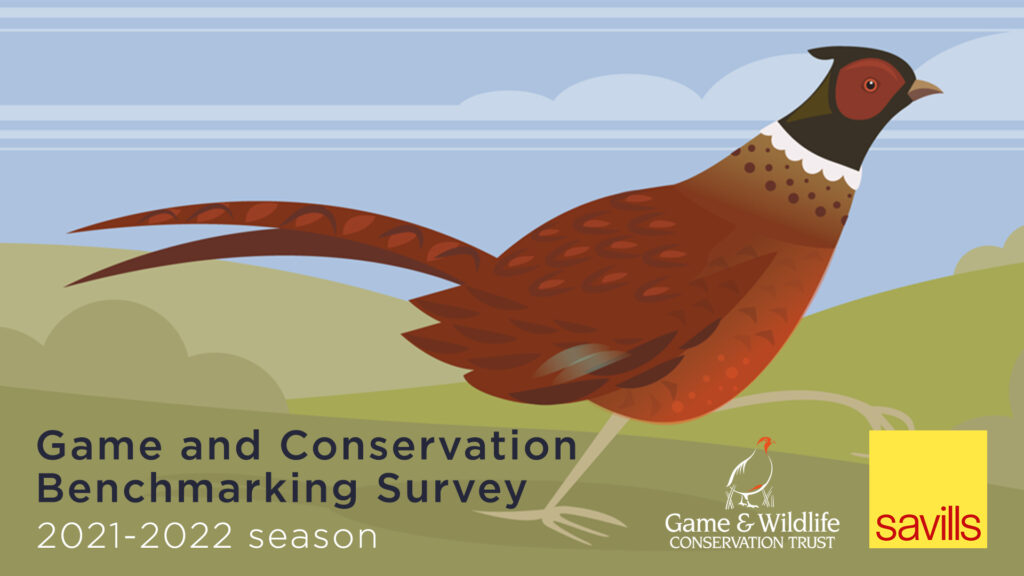We continually monitor the effects of changing environmental conditions on game and wildlife through carefully planned scientific research around the country. Our close relationship with so many types of shoot means that we have a wealth of experience on which our clients can draw. Released gamebirds underpin most lowland game shooting in Britain. The process of releasing and related management must work within the law, be transparent, and withstand scrutiny.
Compared with 20 years ago, the demands placed on lowland shoot managers are diverse. Providing testing, high-flying birds at low cost remains a core objective for many, but today the effective management of disease and maximising wild productivity from released birds are increasingly important.
New farming methods and human pressures have gradually changed the face of many shoots over a long period of time. We are able to assess the impact of such changes on game populations and the shooting environment, and to recommend improvements.
It’s stunning how just a few small, often quite simple innovations by an experienced eye can make a huge difference to your shoot. However, sometimes the impact of government agricultural policy or, for example, the devastation of storms, have a dramatic effect on the land. Where major changes are necessary, the results of decisions taken now may not be apparent for many years to come. We can help make sure those decisions are right.
Habitat improvement
Providing the right conditions and habitat for game is vital to ensure that both wild and released birds survive and thrive on your land. We provide advice on all types of habitat creation or enhancement, particularly on nesting and brood rearing cover for wild birds and on the strategic siting, careful design and choice of specialist game food and cover crops that help draw and hold birds into desired areas of the shoot.


Woodlands
Well managed woods are essential for successful pheasant shoots. Mature woods, not necessarily planted with shooting in mind, can be greatly improved by taking suitable action. Designing new game coverts is one of our specialities and we can give detailed guidance on all key aspects including optimum siting to capitalise on topography and wind direction, wind-proofing, location and composition of flushing points and the correct choice of tree species that attract grant aid. The highly regarded GWCT ‘instant spinney’ technique helps provide suitable cover from which gamebirds can be driven in the first season after planting.
Restocking
Sustainable gamebird releasing is based on minimising negative effects and maximising positive ones so that the overall balance for habitats and biodiversity is neutral or positive. There are several different methods of restocking to enhance wild game populations and make a shoot more productive. We can help identify appropriate sites for pheasant or partridge release pens in relation to drives and how they should be constructed and managed; the right course of action can pave the way to good recovery rates whilst fully adhering to the Code of Good Shooting Practice.


Feeding
Whether a shoot relies on wild birds or on restocking, a suitable feeding regime must be carefully planned. The programme can significantly affect the condition of the birds for breeding, their welfare, and their presentation and performance on a shoot day. Our advisors can give the best advice, tailored to suit the method of keepering and the time available.
Wildfowl and waders
The creation of carefully designed flight ponds can inject a measurable boost to farm biodiversity and introduce fun variety to a day’s sport. Correct siting and design, planting water margins and placing hides are but some of the aspects which may need to be discussed. Our advisors are well-placed to impart researched advice on woodcock and snipe habitats and management.


Shoot budgets
The GWCT continues to be involved with an annual analysis of shoot costs. This allows our advisors to compare a shoot’s expenses with the national average and point the way to improvements. In an increasingly expensive sport, shoot owners or managers need to make the most cost-effective use of their land. A few well thought out changes can soon pay for themselves, both in terms of productivity and quality of the shoot, and by enhancing the capital value of the land. The cost of a visit is around 15-20 extra birds in the bag.
Shoot day attendance
Clients sometimes like to invite a GWCT advisor to see the shoot in action. The detached observer can often make practical suggestions for improvements, whether through standing close to the guns or watching from the beating line.

With over 50 years of providing advice on lowland game management to thousands of shoots in the UK and abroad, we are uniquely positioned to provide a package of up-to-date, targeted advice.